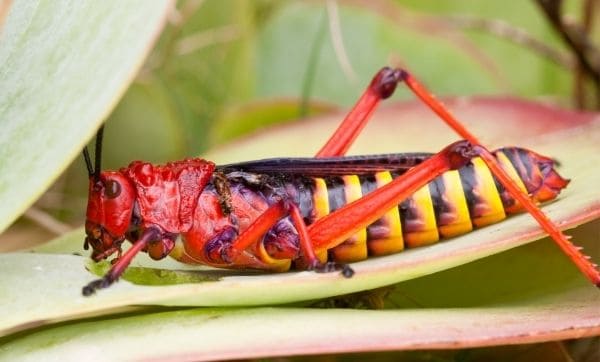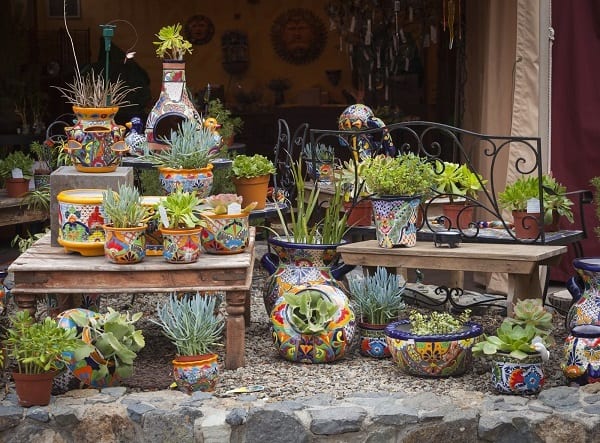3 Tips for Keeping Pests Away From Your Succulents
Pests are destructive in multiple ways. They can cause significant damage to properties. They can also spread numerous diseases, including rabies and Lyme disease. For gardeners, the most destructive feature of these critters is how they wreak havoc on gardens that have been carefully created and managed.

Pests love your succulents just as you do, but for different reasons. They want to feed on your succulents and will wreak havoc if allowed. To prevent this, you can enact DIY measures or you can always hire a pest control expert for help.
One of the best gardening tips is to keep your garden inaccessible to the critters. Let’s consider three top measures for keeping pests away from your succulents.
Install Barriers
Since the goal is to keep the critters away from your garden and succulents, you should work towards limiting their access in general. Fencing works as a barrier against the different types of pests, especially wild animals. Install a face with adequate strength and height to keep the critters away. To serve as a proper physical barrier against the critters, the fence must also be installed well into the ground. This is to limit the access of burrowing animals.

Fencing is a basic measure for keeping the critters away. Apart from fencing, you can apply direct coverings over the plants that are susceptible to pest attacks. These row coverings specifically work against insect pests like vine borers. A fine net can provide the barrier you need to keep the infesting pests away.
You can also use a cardboard collar from the stem of the plants to limit the access of burrowing insects to your succulents.
In creating physical barriers against pests, focus on measures that work against the specific problem you’re facing as well as general measures. Fencing is more suited for wildlife pest problems, while row covers are more suited for insect pest problems.

We should also mention how the spacing of the plants can encourage an infestation. The wider the spacing, the lower the chances of pest infestations. Plants that are tightly packed basically provide shelter and good hiding spots for insect pests and small animal pests.
Plant Natural Repellents
Some plants are natural repellents of the different critters that can infest gardens. Planting such plants is an important strategy for protecting your succulents against destructive critters.
This works for the different kinds of pests, including wildlife critters and insects. The general repellent plants include lemongrass and garlic. These plants can be incorporated into gardens, especially close to the vulnerable succulents.

For example, garlic helps to repel insects like aphids, Japanese beetles, and spider mites. Garlic could be planted close to vegetables to deter the activity of these insects. Basil can also be planted to discourage the activity of tomato hornworms that commonly attack tomatoes.
Marigolds can also be incorporated into gardens to discourage the activity of destructive critters. Marigolds can be planted in squash and cucumber gardens to discourage the activity of nematodes and cucumber beetles. As a general plant repellent, lemongrass can be planted to discourage the activity of different wildlife critters.

The process of specifically growing plant repellents to discourage the activity of insect and wildlife pests in an area is called companion planting. It is an effective measure for keeping pests away from succulents.
You can find out about the repellent plants specific to the plants in your garden and apply companion planting to prevent infestations.
Crop Rotation
Crop rotation is aimed at limiting the access of destructive pests to your succulents. This method works by simply making the plants the critters are looking out for inaccessible to them. Crop rotation simply entails dedicating sections of your garden to different plants every year.

Changing the plants in an area yearly will limit the access of the insects that spend their winters underground. They go underground to survive the winter and reappear during spring to feed on your succulents like they did the previous planting season.
If they do not find their desired plant, they will have to travel to the new location and risk being killed by predators.
For crop rotation to work, you have to know what was planted in a specific location the previous year. Keeping a garden diary will help with this.
Your succulents will always attract pests. Keeping the pests away from your succulents requires the application of proven methods. You can get the critters off your garden or simply limit access to their preferred succulent.
Gardening takes a lot of work, and no one deserves to have their garden wiped out by destructive critters. The three methods highlighted above will help to keep your succulents out of reach of the critters.

Successful gardening requires an understanding of the problem at hand and the application of the most efficient way of managing the problem. We should also mention the importance of general pest control methods in keeping your property unappealing to different pests.
Apply general habitat modification measures to discourage wildlife infestations of your property, especially if your area has a wildlife pest problem. Keeping pests away from your succulents requires the application of general and peculiar measures in line with the identified pest problem.
